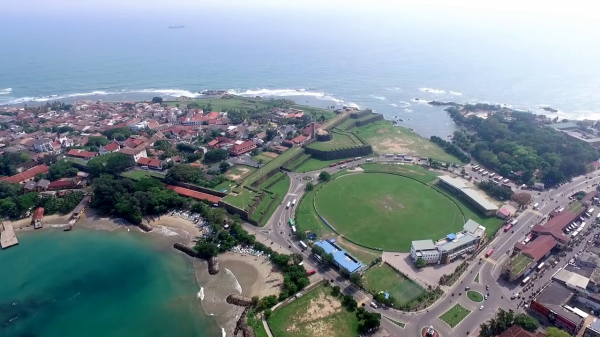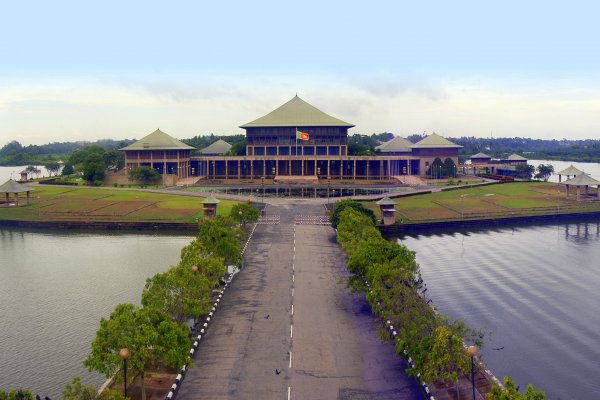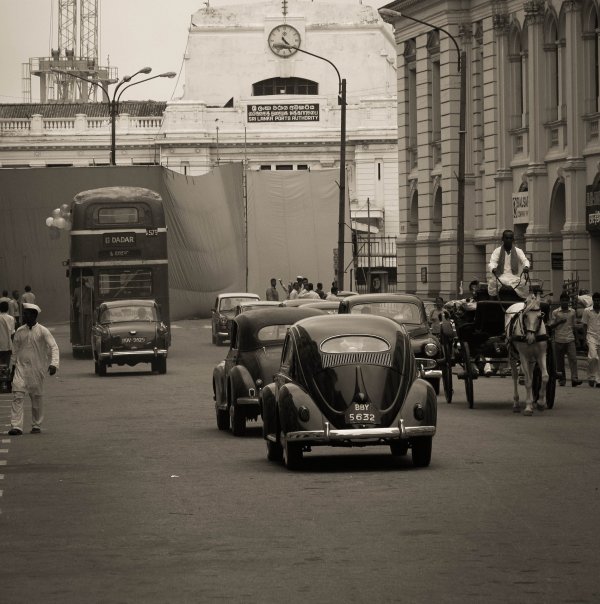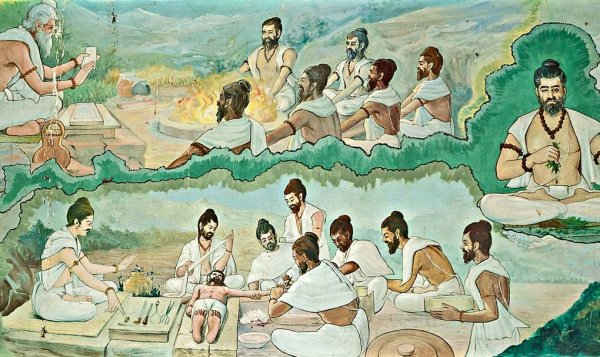
The central city of Colombo is undergoing many changes as we speak. Not only is it to be transformed into a megapolis, but several high-rise buildings that have sprung up in the past five years have changed the skyline of Colombo immutably. In addition, the planned Port City Project will ensure Colombo will continue to be an important commercial district in Sri Lanka.
It is perhaps with this in mind that the Megapolis and Western Development Minister Patali Champika Ranawaka announced on December 19, 2017, that begging would be prohibited within the Colombo city limits, from January 1, 2018.
But this is not the first time the government has touted the idea of ridding Colombo of beggars. In April 2017, the government said it would eliminate ‘beggars, stray cattle, and stray dogs’ from within the Colombo city limits, and a similar message has resounded for years.
Successive governments have attempted to eliminate the city of beggars through various means—there were mass arrests under the Vagrants Ordinance, and, more chillingly, a spate of killings in 2010 which, though no evidence emerged to support the fact, were blamed on the government.
The current government has communicated the decision to move the mendicants from their begging locale to a rehabilitation centre in Rideegama, Ambalantota. But details of the rehabilitation centre remain hazy and very little is known of what happens to the beggars once they are taken off the street.
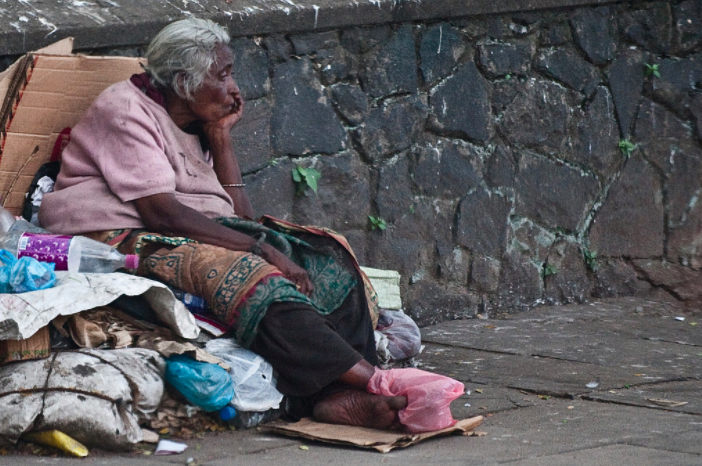
Homeless on a street corner. Image courtesy: Kah Zen Kam, Flickr
Arrest and Removal
As the first step in clearing the city of beggars, arrests would be made under the Police Ordinance and the Vagrants Ordinance, Police Media Spokesman SP Ruwan Gunasekara said.
He told Roar Media that it is estimated that as many as 600 beggars operate in Colombo, who would all be arrested and produced before a court.
“This is the law, and we are upholding it,” he said of the two enactments that hold policemen duty-bound to ‘prevent all crimes, offences, and public nuisances’ and to ‘apprehend disorderly and suspicious characters’, defining as vagrants ‘every person being able to maintain himself by work or other means, but who shall willfully refuse or neglect so to do, and shall wander abroad or place himself in any public place, street, highway, court or passage to beg or gather alms.’
Rehabilitation at Rideegama
Having being produced at court, the mendicants will be moved to a facility in Rideegama, Ambalantota.
Project Manager, Megapolis and Western Development Ministry Ranjit Meegaswatte told Roar Media that the facility was constructed during the Sirimavo Bandaranaike government.
“It currently houses 480 beggars. But we (the Megapolis and Western Development Ministry) built ten new buildings which can accommodate 600 more beggars,” he said.
Elaborating on the facility at Rideegama, Additional Secretary, Megapolis and Western Development Ministry, Anjali Devarajan said it extended to 107 acres.
“Of this only about 55 acres have been utilized,” she said, adding that there was also farmland on the premises.
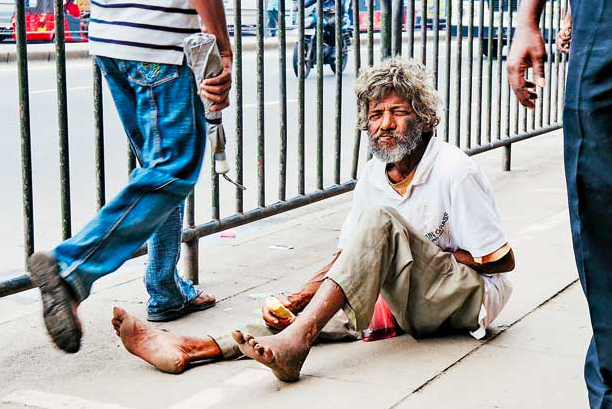
Commuters pass an old man on the streets. Image courtesy: newsradio.lk
She said that although the facility was managed by the Social Welfare Ministry, the Megapolis and Western Development Ministry extended its help wherever possible.
Southern Province Social Services Commissioner Mahesh Karunanayake told Roar Media that the facility conducted several rehabilitation programmes for the beggars.
“Beggars and prostitutes are booked under the Vagrants Ordinance and brought in through a court ruling and can only leave through a court ruling,” he said.
He said a majority of those brought in were disabled or mentally handicapped, and hence unable to work, but the able-bodied were employed for agriculture.
“All the vegetables the facility uses are sourced on site,” he said.
The commissioner also explained that the women picked up as prostitutes were engaged in creating handicrafts and handloom products.
Beggars can leave the facility once they have served the time imposed on them by the court, but many stay on, the Social Services Commissioner explained.
He said the Social Welfare Ministry supported those beggars that had no means of supporting themselves but noted that families looking for ‘missing’ loved ones ought to check in with the Southern Province Social Services Department to see if their loved ones were there.
“Some of the older folk are senile or near senile,” he explained, ‘and they have no recollection of their families or where they live. They end up on the streets and are brought here and stay here until someone can come and get them—if that ever happens.”
He explained that it was necessary to seek court intervention to release a ‘beggar’ or vagrant housed at the Rideegama facility, but admitted that not many were in a position to hire legal aid to enable them to submit a motion for their release before court.
“We do what we can with the resources we have,” the Social Services Commissioner said, “ and we try to give these beggars better care than they had on the street.”
Sociological Impact
Professor Tennyson Perera, of the Sociological Department of the University of Sri Jayawardenepura, was of the opinion that the move by the government was a positive one.
“This may, however, be viewed by the beggars as a negative one,” he cautioned.
Beggars who were familiar with the city would be loath to leave a relatively free and easy lifestyle, for one in which they would be relocated to a rural location and expected to work, he said.
“There are some beggars who will be happy to be taken care of,” he said, “but most of them are in ‘group formations’, working in close association with relatives and other beggars.”
Entire families begged, the Professor said, father, mother, and children at various locations, living in close proximity to the city in areas like Kolonnawa, Angoda, Dehiwala, and Ratmalana.
These would be resistant to moving to Rideegama, he explained.
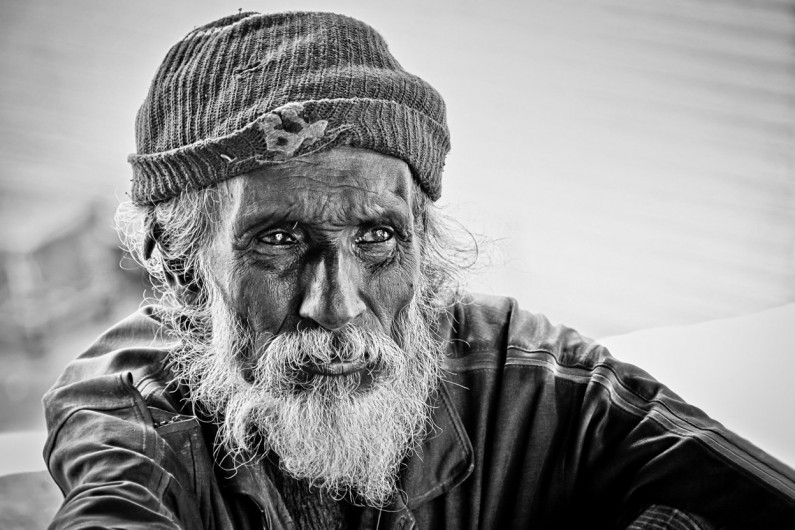
An old man on the streets. Image courtesy: taringa.net
There were also mudalalis (dealers) who ‘controlled’ certain beggars, who would be unhappy with the government’s decision to clear the streets, the Professor opined.
The professor also pointed out that as Sri Lanka was a Buddhist country, there were those that gave to beggars as a means of collecting merit, thereby unconsciously encouraging the trade.
“There is a close relationship between beggars and those people, from a religious point of view,” he said.
Be that as it may, the announcement by the government indicates a renewed resolution to rid the streets of vagrants and beggars. Infrastructure has been put in place to take beggars, i.e. those unable to fend for themselves and forced onto the street for the lack of means, off the streets. While it may be imagined that those in dire need will be grateful for the care, what remains to be seen is how those involved in beggar cartels will respond to the government’s latest decision to clear the city of Colombo from organised begging.
Cover image courtesy: Wikipedia

